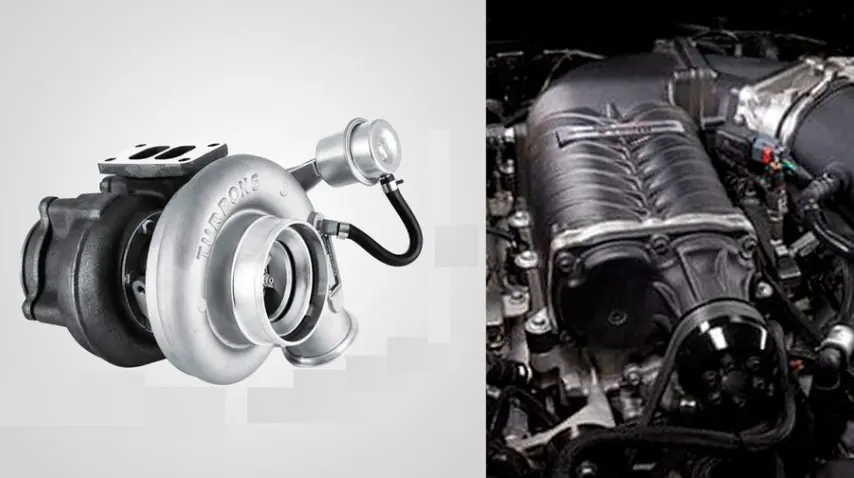It is nothing more than a miniature fan that will fill our intake manifold under pressure. How does it do it? We know that gases under pressure come out of the exhaust, which are the ones that our engine has burned and now we are going to use to move our turbine, just as we blow a spinner to make it turn.
But the turbo is an ingenious mechanism, are two separate chambers but joined by the same axis, on one side is the turbine, whose blades (fins) will be moved by the exhaust gases and transmit that movement by the same axis to the other chamber, where there is also another turbine, which spinning rapidly (thousands of revolutions per minute) will move the ambient air into the intake manifold squeezing it, compressing it, as if it did the same nature with atmospheric pressure at sea level.
Curious fact: for every thousand meters of altitude, 10 percent of power is lost due to what was mentioned in the first paragraphs.
That is why our pollution problems, at this altitude the engines are less efficient.
Now the difficult part is to control that demonic micro hurricane generated by the turbo. Why do I say this? We commented that the exhaust gases make the turbine rotate, but the more we accelerate, the more the turbine will turn thousands and thousands of turns and on the other hand it will generate more and more pressure and if we leave it like that, we would inflate, we would thunder the engine.
The turbo has a mechanism called Waste-Gate that will prevent overpressure by releasing excessive gases through this valve. They also come equipped with an attachment known as an intercooler.
The intercooler is a radiator that will help us to cool the air coming from the turbine, but why cool?
Let’s remember that the turbo is built in the same “container” that the hot exhaust gases move the opposite turbine.
So, this whole mechanism is burning and logically the air coming out of it will be very hot. And by a principle of physics that we were taught in high school, studied by Gay Lussac, as the temperature increases the volume of the gas increases, the air molecules being hot are dispersed (much salad bowl, little salad) then, if we cool it, we gather the molecules, more air will enter and improve combustion, the engine will be more efficient.
The turbo has to be cooled in turn and this is achieved by lubricating that shaft with the same lubrication of the car, some are also cooled by the engine cooling system.
The great advantage of the turbo is that it saves energy because it uses the energy generated by the exhaust gases, they are small and do not add weight to the car. A disadvantage is what is called “turbo lag” or response delay, since the turbo dilates when the revolutions start to increase and the intake manifold has to be “filled”, hence a “pull” is felt after a few seconds.
Nowadays they come in all flavors and colors, depending on the engines that the manufacturers want to use:
Variable geometry turbo (VTG): The latest, where the blades are mobile and by varying can change the speed, delivering a very linear pressure.
Biturbo: Two turbos of different sizes, the small one works at low revs, the big one at high revs.
Twin turbo or parallel turbo: Two small turbochargers that start generating pressure from very low revolutions, which reduces turbo lag.
Asymmetric turbo compressor: Installed on a single engine bed.
Scroll turbo: Starting from the ignition sequence (in the 4 cylinders) the turbo has two inlets, one for pistons 1.3 and the other for 4.2, reducing the “back pressure” making the flow more continuous.
Sequential Biturbo: There are two turbos, at start-up when there is little gas one sends it to the other increasing the response time.
Mixed turbo and supercharger together, as Volkswagen has in the TSI engine.
SUPERCHARGERS
These compressors would essentially do the same as the turbos, put more pressure to the intake manifold, but in a simpler way.
It consists of a mechanism that inside is similar to a huge screws, with only two or three turns, these are coupled together and when rotating, are “pulling” the air and compressing it to the entrance of the intake manifold, these screws are moved by the crankshaft pulley of the same engine, through a belt, which we would say subtracts power.
It is a heavy mechanism. But it has the advantage that as the compression is linear to the engine revolutions, we can have more power from low rpm. They also have a valve to prevent overpressure in the system.

